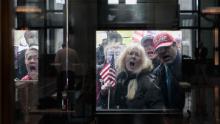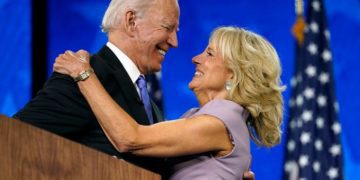[ad_1]
But some health experts and medical groups have warned the US is still behind in its testing capacity — a key factor in the country’s reopening process to help determine and track just how many people are infected.
In a three-part guideline released this week, the White House said states can enter the first phase toward reopening once they see a continued decrease over two weeks.
As of Saturday morning, there were more than 706,000 confirmed cases in the US and at least 37,079 people had died, according to Johns Hopkins University.
President Donald Trump, who has said governors will call the shots on when to reopen their state, said Thursday the states with the lowest number of cases could begin reopening “literally tomorrow.”
Meanwhile, an influential model of the virus that’s often cited by the White House says some states with a low number of cases could begin lifting measures starting May 4. Those include Vermont, West Virginia, Montana, and Hawaii.
Others, including Iowa, North and South Dakota, Nebraska, Utah, Arkansas, and Oklahoma, may need to wait until late June or early July.
“Actual decisions by states to relax social distancing should be informed by meeting critical metrics closer to these dates, including a very low number of estimated infections in the community — less than one estimated infection per 1 million people,” the Institute for Health Metrics and Evaluation at the University of Washington (IHME), where the model was created, said in a news release.
Montana, still recording one of the lowest numbers of cases in the country, says it’s not prepared to reopen.
“Even the gating criteria (of two straight weeks with new cases slowing down) that the president put out yesterday — we haven’t met those criteria,” Gov. Steve Bullock said Friday.
Where measures are being lifted
Texas has more than 18,000 reported infections, according to a tally by Johns Hopkins University, making it one of the states with the most cases.
The governor also directed retail stores to begin reopening April 24 and instead deliver products to customers’ cars and homes. He said the process of reopening the state will happen gradually and will be guided by medical experts.
US Rep. Lloyd Doggett, criticizing the governor’s decision, said there will be a “cost in lives of doing it prematurely when there’s so many questions about the accuracy of testing, of so many dangers from ignoring social distancing. I find his orders troubling.”
“The only way this is going to work even with something like golf or shooting ranges or trails, is if we follow those, washing our hands, stay home (guidelines). If you’re sick, cough into your sleeve, wear a mask.” Walz said in a news conference Friday.
US still behind on testing, expert says
Experts have for long said one of the major determining factors behind governors’ decisions to reopen their economies should be testing, and medical experts continue to insist the country is behind.
Vice President Mike Pence said Friday the White House coronavirus task force believes the US has the testing capacity for states to begin easing their measures — the first of three phases in the federal guide of reopening the country.
Dr. Tom Frieden, the former director of the US Centers of Disease Control and Prevention, says the country’s current number of conducted tests — less than 150,000 a day — are not nearly enough.
“If we were just testing the highest priority people and nobody else, we’d need about three times as many tests,” Frieden told CNN. But as the US is testing lower priority people as well, the country would need 10 to 20 times more tests than that, Frieden said.
And earlier this week, the Association of American Medical Colleges sent a letter to the government’s task force saying labs are facing critical shortages.
“Laboratories across the country are working day and night to expand testing capacity but are severely hampered by shortages of needed reagents, swabs for testing, PPE, and specialized equipment designed by companies to be used with their own machines,” it said.
More protests planned over stay-at-home orders
Protesters have gathered in Michigan, Ohio, Kentucky, Minnesota, North Carolina, Utah and California to voice their opposition to the measures.
“A small segment of the state is protesting and that’s their right,” Michigan Gov. Gretchen Whitmer told CNN. “The sad part is, though, that the more they’re out and about, the more likely they are to spread Covid-19,” Whitmer said, “and the more likely we’re going to have to take this posture for a longer period of time.”
More are planned for the coming days, including in Wisconsin, Kansas and Missouri.
“Hundreds of thousands of workers are out of work. Hundreds and thousands of small family businesses are being destroyed right now under this quarantine, under this lockdown,” Dorr told the news station.
“Many small businesses couldn’t afford to keep their doors closed for a week or two, now we’re talking another month. Thousands of small businesses will shut their doors forever,” he added.
CNN’s Ben Tinker, Janine Mack, Betsy Klein, Andy Rose, Arman Azad and Curt Devine contributed to this report.





















